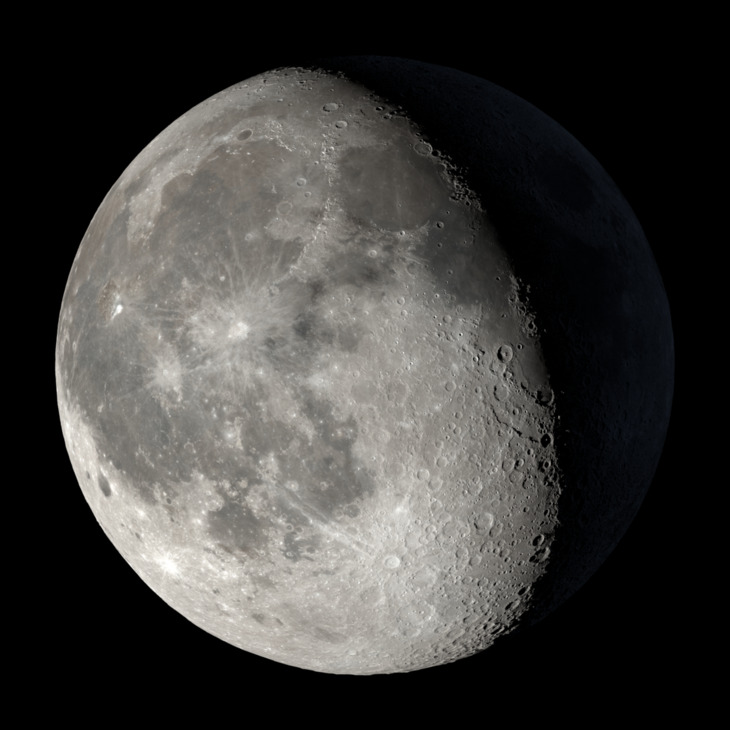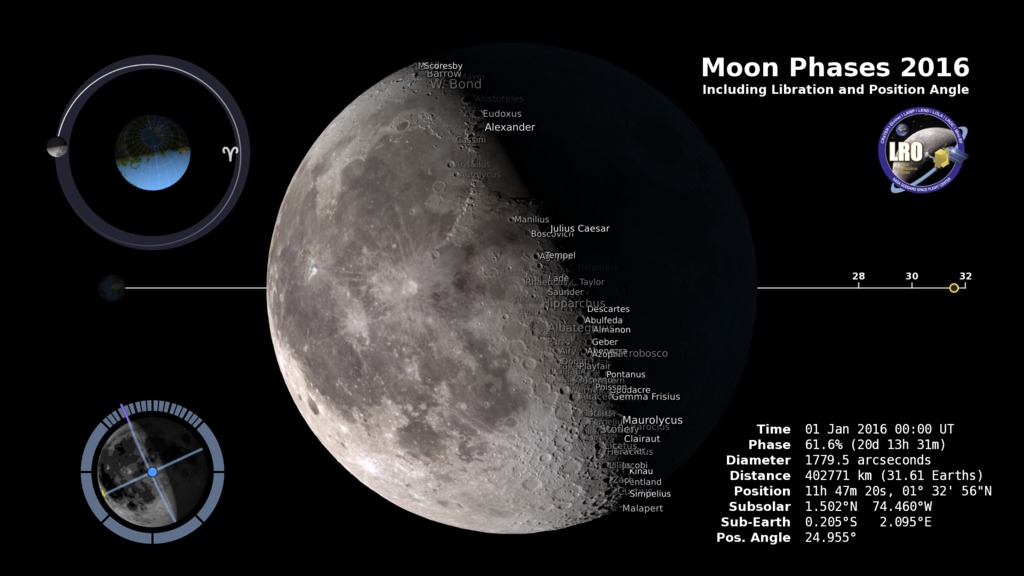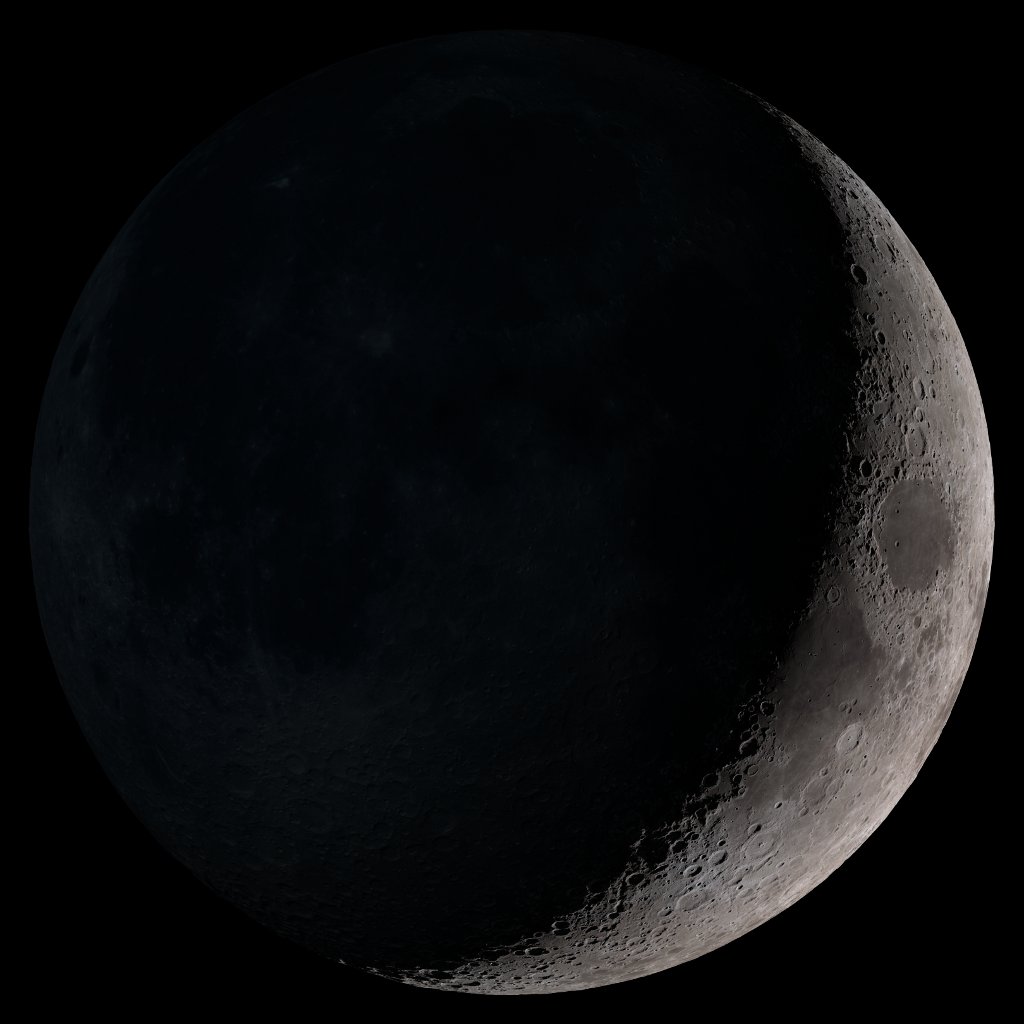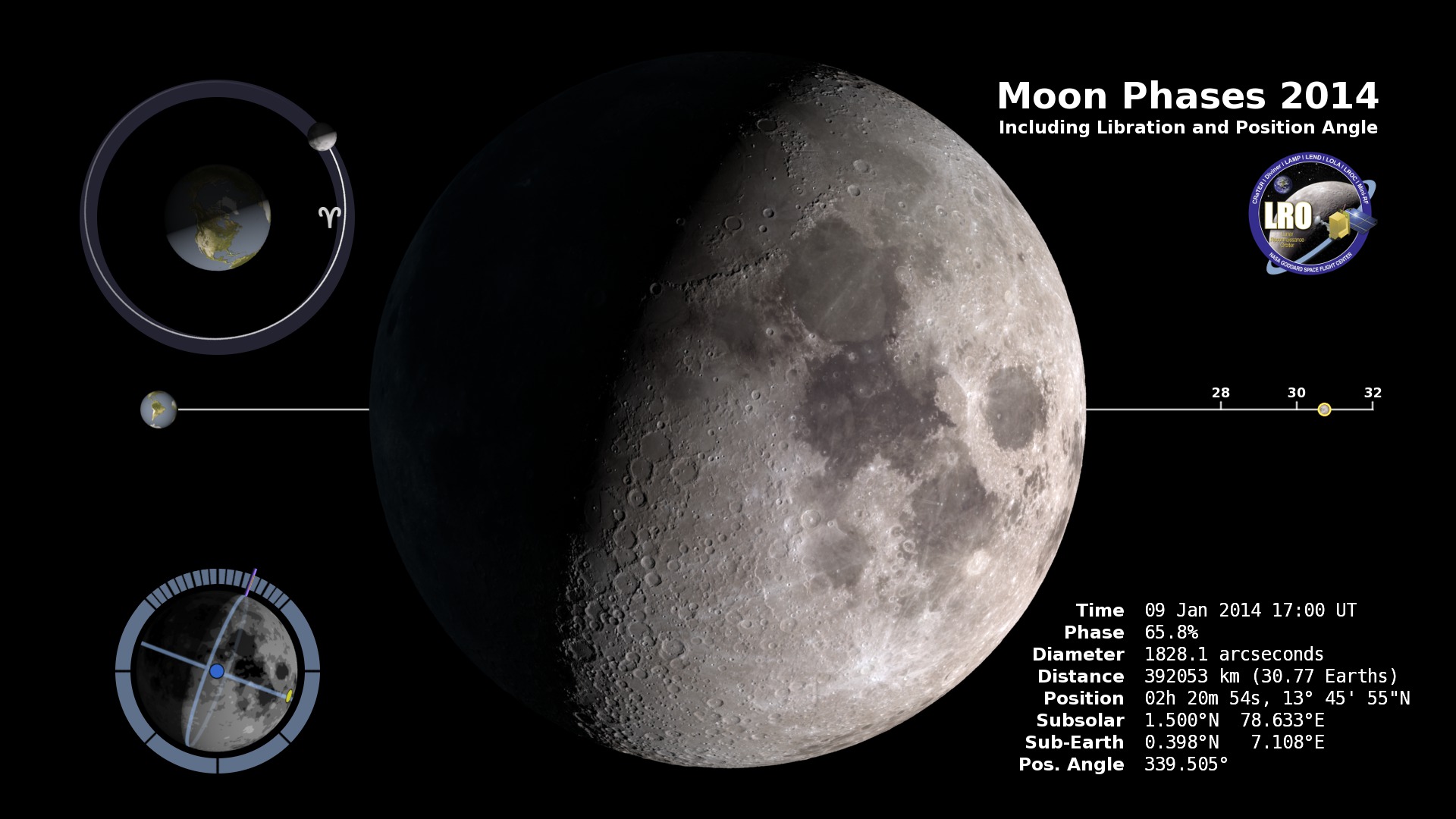Moon Phase and Libration, 2012
The animation archived on this page shows the geocentric phase, libration, position angle of the axis, and apparent diameter of the Moon throughout the year 2012, at hourly intervals. Until the end of 2012, the initial Dial-A-Moon image will be the frame from this animation for the current hour.
More in this series:
Moon Phase and Libration Gallery
The jagged, cratered, airless lunar terrain casts sharp shadows that clearly outline the Moon's surface features for observers on Earth. This is especially true near the terminator, the line between day and night, where surface features appear in high relief. Elevation measurements by the Lunar Orbiter Laser Altimeter (LOLA) aboard the Lunar Reconnaissance Orbiter (LRO) make it possible to simulate shadows on the Moon's surface with unprecedented accuracy and detail.
The Moon always keeps the same face to us, but not exactly the same face. Because of the tilt and shape of its orbit, we see the Moon from slightly different angles over the course of a month. When a month is compressed into 12 seconds, as it is in this animation, our changing view of the Moon makes it look like it's wobbling. This wobble is called libration.
The word comes from the Latin for "balance scale" (as does the name of the zodiac constellation Libra) and refers to the way such a scale tips up and down on alternating sides. The sub-Earth point gives the amount of libration in longitude and latitude. The sub-Earth point is also the apparent center of the Moon's disk and the location on the Moon where the Earth is directly overhead.
The Moon is subject to other motions as well. It appears to roll back and forth around the sub-Earth point. The roll angle is given by the position angle of the axis, which is the angle of the Moon's north pole relative to celestial north. The Moon also approaches and recedes from us, appearing to grow and shrink. The two extremes, called perigee (near) and apogee (far), differ by more than 10%.
The most noticed monthly variation in the Moon's appearance is the cycle of phases, caused by the changing angle of the Sun as the Moon orbits the Earth. The cycle begins with the waxing (growing) crescent Moon visible in the west just after sunset. By first quarter, the Moon is high in the sky at sunset and sets around midnight. The full Moon rises at sunset and is high in the sky at midnight. The third quarter Moon is often surprisingly conspicuous in the daylit western sky long after sunrise.
Celestial north is up in these images, corresponding to the view from the northern hemisphere. The descriptions of the print resolution stills also assume a northern hemisphere orientation. To adjust for southern hemisphere views, rotate the images 180 degrees, and substitute "north" for "south" in the descriptions.
The phase and libration of the Moon for 2012, at hourly intervals. The full-resolution frames include an alpha channel.
The phase and libration of the Moon during May and June, 2012. The wider angle and lower speed allow a view that includes the background stars and the Sun. The near alignment of the Sun, Moon, and Earth during the May New Moon creates an annular solar eclipse visible at high northern latitudes. The June New Moon isn't so near the Sun.

Waxing crescent. Visible toward the southwest in early evening.

First quarter. Visible high in the southern sky in early evening.

Waxing gibbous. Visible to the southeast in early evening, up for most of the night.

Full Moon. Rises at sunset, high in the sky around midnight. Visible all night.

Waning gibbous. Rises after sunset, high in the sky after midnight, visible to the southwest after sunrise.

Third quarter. Rises around midnight, visible to the south after sunrise.

Waning crescent. Low to the east before sunrise.

New Moon. By the modern definition, New Moon occurs when the Moon and Sun are at the same geocentric ecliptic longitude. The part of the Moon facing us is completely in shadow then. Pictured here is the traditional New Moon, the earliest visible waxing crescent, which signals the start of a new month in many lunar and lunisolar calendars.
Credits
Please give credit for this item to:
NASA/Goddard Space Flight Center Scientific Visualization Studio
-
Animator
- Ernie Wright (USRA)
-
Producer
- Chris Smith (HTSI)
-
Scientist
- Richard Vondrak (NASA/GSFC)
-
Project support
- Joycelyn Thomson Jones (NASA/GSFC)
Release date
This page was originally published on Sunday, January 1, 2012.
This page was last updated on Sunday, February 2, 2025 at 10:04 PM EST.
Missions
This page is related to the following missions:Series
This page can be found in the following series:Datasets used
-
[Clementine]
ID: 8 -
DEM (Digital Elevation Map) [LRO: LOLA]
ID: 653
Note: While we identify the data sets used on this page, we do not store any further details, nor the data sets themselves on our site.









